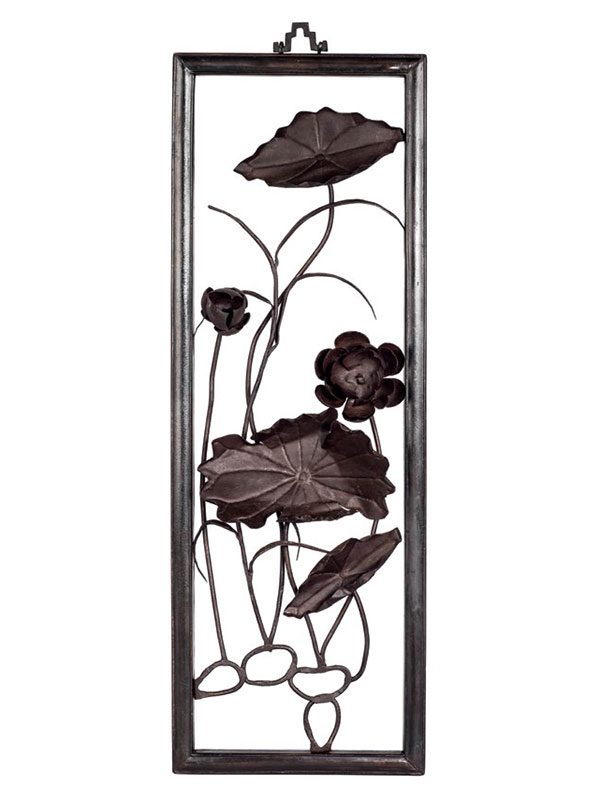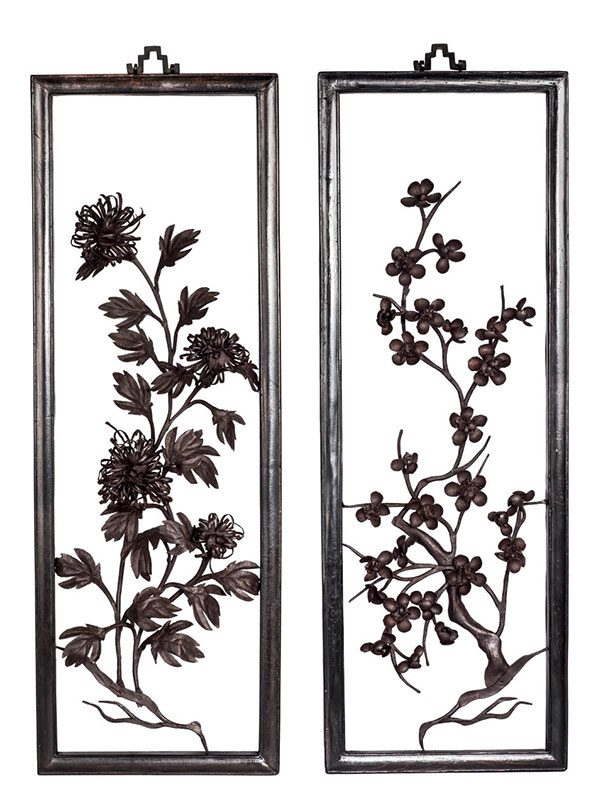Three iron paintings, tiehua
Three iron paintings, depicting gnarled branches of a flowering prunus tree, lotuses and chrysanthemums respectively. Each painting is framed within a hardwood frame. The wrought iron elements are made individually and jointed together with bolts.
The birth of tiehua was attributed to a Wuhu blacksmith, Tang Peng (also known as Tang Tien-chi, 1644 – 1722), who was inspired by Chinese ink paintings depicting landscapes by the painter Xiao Yun-Cong (1596 – 1673). [1] The discovery of iron belt hooks in graves dated to the 4th and 3rd centuries BC provides some insight into when the material was first used in China, although it is not until the 17th century that the names of actual artists working in the medium are recorded. [2] A set of four 18th century iron paintings representing the seasons is in the collection of the British Museum, one of which is illustrated by Jenyns. [3] A comparable set of four iron paintings dated to the 17th century, including one with prunus branches, was included in the exhibition, The Chinese Scholar’s Studio: Artistic Life in the Late Ming Period from the Shanghai Museum in 1987. [4]
Provenance: private collection, UK
- Jenyns, R.S. and Watson, W. Chinese Art, vol. II, Phaidon, Oxford, 1980, p. 104
- Jenyns, R.S. and Watson, W. op. cit. p. 70
- Jenyns, R.S. and Watson, W. op. cit. p. 104
- Li, C. T. and Watt, James C.Y. eds. The Chinese Scholar’s Studio: Artistic Life in the Late Ming Period-An Exhibition from the Shanghai Museum, Thames and Hudson, New York, 1987, pp. 120-121, no. 68


